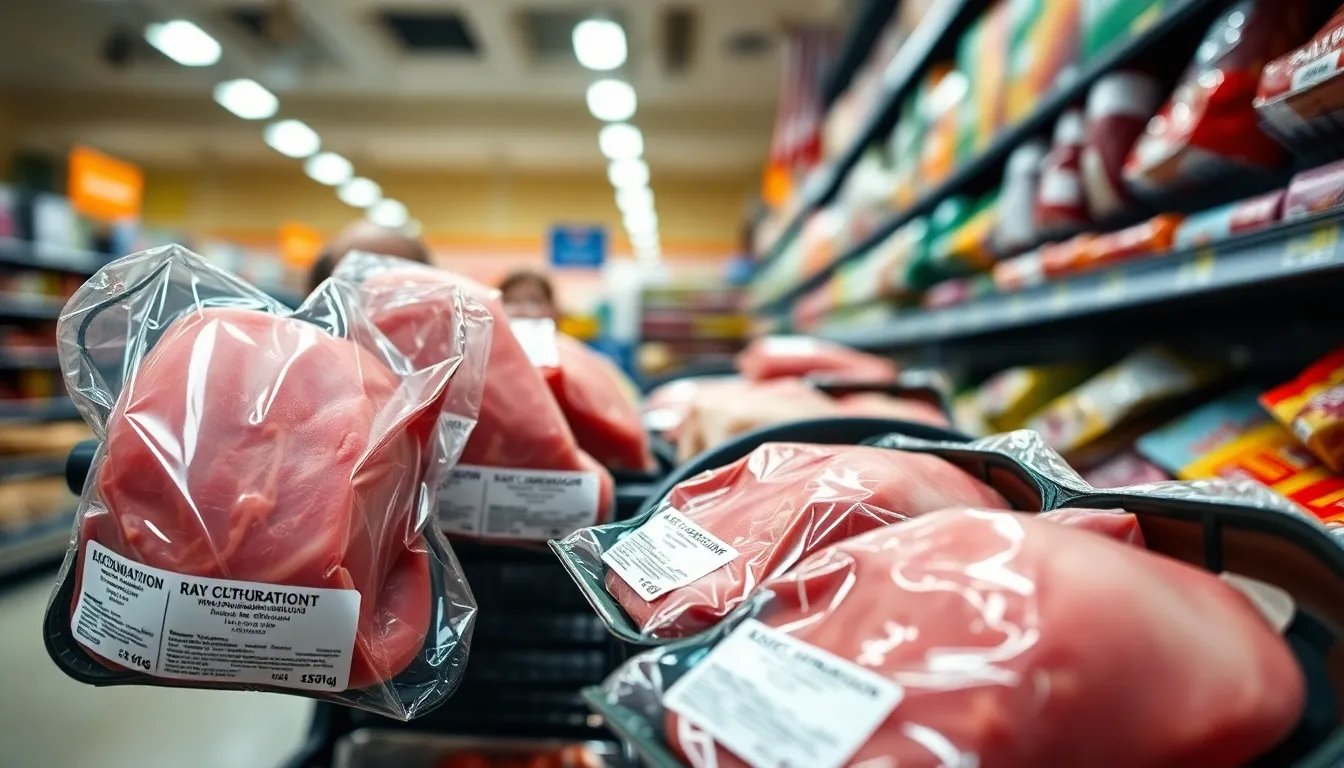When it comes to poultry, nobody wants a surprise that’s not on the dinner plate. Recently, BrucePac found itself in a bit of a pickle, or should we say, a poultry predicament. A recall has been issued, leaving consumers scratching their heads and checking their fridges.
Table of Contents
ToggleOverview of Brucepac Meat Recall
The BrucePac meat recall affects various poultry products due to potential contamination risks. Consumers must stay informed about the specific items involved in the recall. The U.S. Department of Agriculture (USDA) issued warnings to ensure public safety. Inspection reported possible bacterial contamination, particularly Salmonella, which poses health risks.
BrucePac, a prominent industry player, distributed these products across several states. The recall includes ready-to-eat items such as fully cooked chicken strips and packaged deli meats. Specific product codes and expiration dates are critical for identifying affected items.
Retailers have removed recalled products from shelves to prevent further distribution. Customers are urged to check their freezers for any recalled products and dispose of them properly. Symptoms of contamination may include nausea, vomiting, and diarrhea. It’s essential for individuals experiencing these symptoms to seek medical attention if needed.
Authorities continue to investigate the source of the contamination. Transparency throughout the recall process remains a priority to protect consumers. Updates regarding the recall and ongoing safety measures will be provided by both BrucePac and government agencies. Public awareness helps mitigate risks associated with potentially harmful products.
Reasons for Poultry Recall

The BrucePac poultry recall stems from several critical concerns related to product safety. Contamination risks have prompted swift action to protect consumers.
Contamination Concerns
Salmonella remains a significant concern in this recall. It’s known for causing severe foodborne illnesses. Reports indicate the presence of this bacterium in multiple poultry items, including fully cooked chicken strips. Testing results have led authorities to believe these products may jeopardize public health. The U.S. Department of Agriculture has urged consumers to remain vigilant and check their freezers for affected items. Retailers have pulled these products from shelves in response to contamination findings. Monitoring ongoing investigations ensures timely updates about safe consumption practices.
Health Risks Associated
Health risks associated with Salmonella contamination can be serious. Symptoms typically include nausea, vomiting, diarrhea, and abdominal cramps. Individuals can experience these symptoms anywhere from six hours to six days after exposure. The elderly, children, and immunocompromised individuals face higher risks for severe complications. Medical advice recommends seeking immediate attention for persistent symptoms. Ensuring consumer awareness about these health risks helps mitigate the potential for illness. Public health agencies focus on disseminating information to raise awareness and promote safer handling of poultry products.
Impact on Consumers
The BrucePac poultry recall significantly impacts consumers across several states. Confusion and concern about food safety have become prevalent among those who purchased the affected products.
Affected Products
Recalled items include fully cooked chicken strips, packaged deli meats, and other poultry products associated with potential Salmonella contamination. USDA warnings cover various brands and products, prompting an urgent need for consumers to check their freezers for anything that may be compromised. Lists of specific recalled products are available on government websites to assist consumers in identifying risks.
Consumer Reactions
Public responses to the recall reflect anxiety regarding food safety. Many consumers express frustration over the lack of awareness around food recalls. Instances of individuals sharing their concerns on social media highlight the demand for clearer communication from manufacturers and regulatory agencies. Responses also reveal a stronger interest in understanding how to avoid similar risks in the future. Consumers are advised to stay informed about recalls and health advisories to protect their families.
Industry Response
The poultry recall prompted swift reactions from BrucePac and regulatory bodies. Both entities work diligently to address the contamination concerns.
Company Actions
BrucePac initiated a thorough investigation to determine the source of Salmonella contamination. Executives prioritized consumer safety by issuing a voluntary recall of affected products. The company also communicated extensively with retailers to ensure that recalled items were removed from store shelves. Transparency is key during this process, as public updates about the recall status receive attention. They actively encourage consumers to report any symptoms related to the products, reinforcing their commitment to health and safety.
Regulatory Involvement
The U.S. Department of Agriculture (USDA) plays a crucial role in monitoring food safety during the recall. They promptly issued warnings regarding the potential risks associated with BrucePac products. Regulatory agencies are conducting their own investigations to track the contamination’s origin. Communication between USDA and BrucePac is ongoing, as both entities collaborate to prevent further health risks. Public health advisories appear frequently to inform consumers about the recall details and effective safety measures. Further updates are expected as investigations progress, ensuring consumer awareness is a top priority.
Prevention Measures and Future Implications
The priority for both BrucePac and public health authorities focuses on preventing future contamination incidents. Enhanced testing protocols for poultry products could help identify potential risks earlier in the supply chain. Continuous collaboration between manufacturers and regulatory agencies ensures safety standards adapt to emerging threats.
Monitoring and tracing of poultry throughout the distribution process remain essential for maintaining quality control. Retailers receive guidance on best practices for handling and storing recalled products, minimizing consumer exposure to risky items. Communication strategies improve consumer awareness about food safety and recall procedures to reduce confusion during incidents.
Authorities advocate for education on recognizing symptoms of Salmonella-related illnesses. Consumers monitoring their health after purchasing recalled products can report symptoms to health officials. Establishing rapid reporting systems empowers buyers to act swiftly, protecting both themselves and their communities.
Researching sources of contamination becomes crucial for preventing future recalls. Investigations by the USDA and BrucePac will lead to insights that can refine industry practices. Public health advisories will continue to evolve, providing informed safety measures.
In light of this recall, consumers must remain vigilant and proactive about food choices. Regularly checking product labels and staying informed about safety announcements will enhance individual protection. Being aware of personal health conditions that increase susceptibility to foodborne illnesses further contributes to safety.
Together, these measures promise to bolster public confidence in food safety and quality. Building a robust framework around poultry production ensures the industry addresses inherent risks effectively, safeguarding health moving forward.
The BrucePac poultry recall underscores the vital importance of food safety and consumer awareness. As investigations continue into the Salmonella contamination, consumers must remain vigilant and proactive in checking their freezers for affected products. The collaboration between BrucePac and health authorities aims to enhance safety measures and restore public confidence in poultry products.
Staying informed about recalls and understanding the potential health risks associated with contaminated food is crucial for protecting families. As the industry adapts to prevent future incidents, consumers play a key role in ensuring their safety by following health advisories and reporting any related symptoms. Together, these efforts will help foster a safer food environment for everyone.



